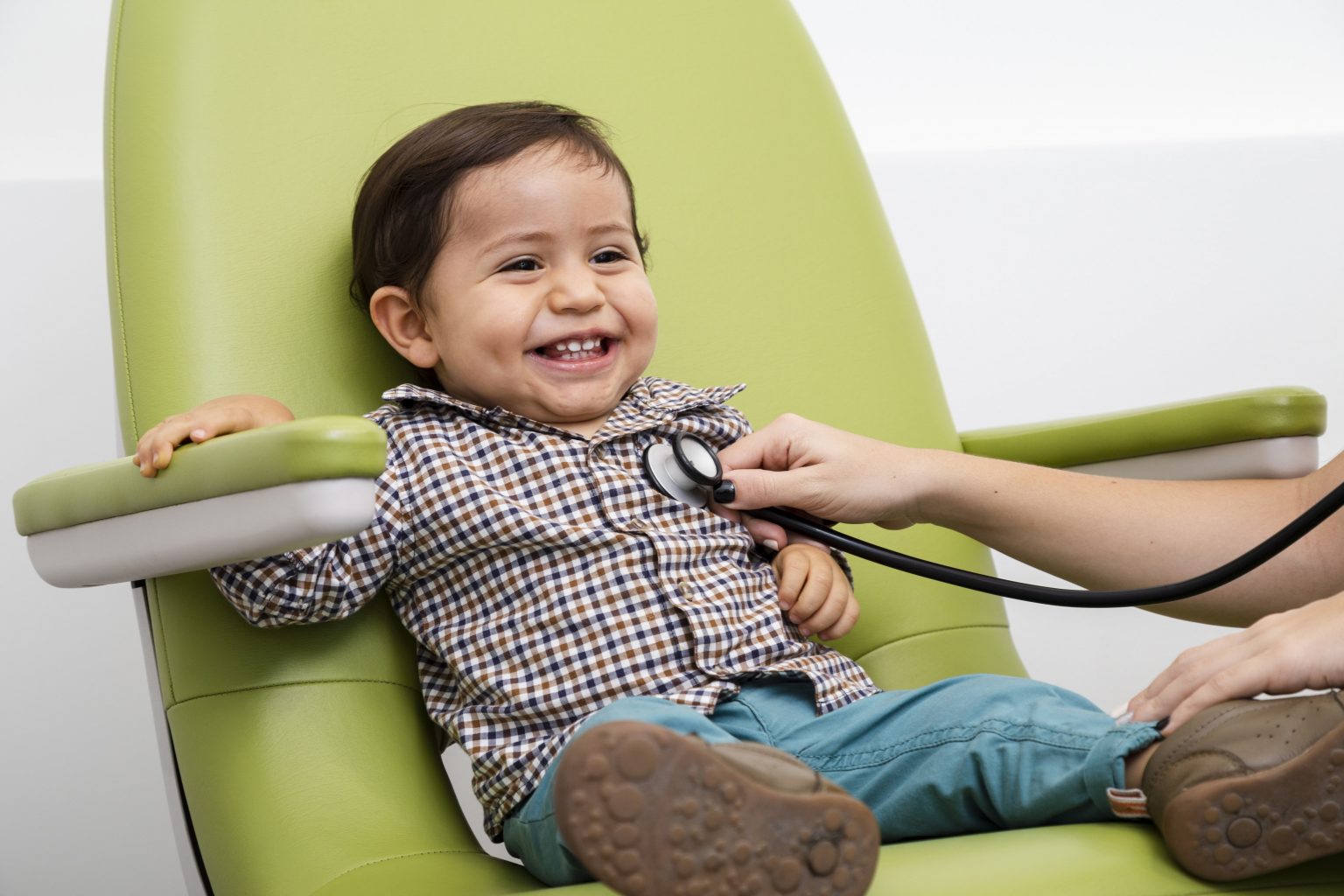Pinkeye or Conjunctivitis: Symptoms, Causes, Treatment
4 min read
By Docgenie , Published on - 27 May 2022Pinkeye or Conjunctivitis is one of the most common eye problems affecting children all over the world. The condition is caused by the inflammation of the tissue that covers the white part of the eye. Inflammation can also occur inside the eyelids. Pinkeye can cause severe redness, swollen eyelids, pain, and itching. When affected, kids might also complain of having sand or dust in their eyes. Conjunctivitis can also cause some kind of discharge from the eyes and sensitivity to bright light. The name Pinkeye is from the telltale red or pink color of the eye. If your child shows any of these symptoms, you can search for an online pediatrician consultation near me for a check-up and treatment.
The condition mostly spreads through hands which become contaminated by direct contact with discharge from an infected eye. It can also spread when the hands touch surfaces contaminated by respiratory tract secretions. When the child touches his/her eyes with a contaminated hand, the infection gets into the eyes.
Types of Pinkeye
Different infecting agents cause different types of pinkeye conditions. Here are some of the common types-
Bacterial Pinkeye
Bacterial Pinkeye may affect one or both eyes. The symptoms include red or pink, itchy, and painful eye(s). At times there could be some amount of green or yellow discharge. In many cases, the infected eyes remain crusted shut in the morning. Doctors usually treat this with antibiotic eye drops.
The incubation and contagious period, that is, the time between being exposed to the condition and showing symptoms depends on the type of Pinkeye. In the case of Bacterial Pinkeye, the period is uncertain. This is because the infection-causing bacteria are normally present in most people and do not typically cause infection. However, the period comes to an end when the medication starts or when the symptoms are no longer noticed. You can opt for an online pediatric doctor consultation in Delhi for diagnosis and possible treatment of Bacterial Pinkeye.
Viral Pinkeye
It usually affects only one eye. The symptoms include pink, swollen, watering eyes and sensitivity to bright light. Viral Pinkeye, at times, occurs along with a viral respiratory tract disease and shows other symptoms as well. Adenovirus Conjunctivitis, a type of viral conjunctivitis, can be contagious for weeks after the appearance of symptoms. Children affected with this condition often get a fever, sore throat, and other respiratory tract symptoms. Antibiotics do not help the infected child or reduce the spread of the infection. However, Viral Conjunctivitis often doesn't need treatment. The contagious period continues till symptoms are present.
Allergic Pinkeye
Allergic Pinkeye usually affects one or both eyes. The symptoms include itching, redness, and excessive tearing. There is no particular contagious period for this type of Pinkeye. It occurs as a reaction when the child comes in contact with an allergy-causing agent. The allergic reaction may occur immediately or get deferred by hours or days after the contact. Oral medications or eye drops can help treat this disease.
Chemical Pinkeye
This type of Pinkeye is immune-mediated, which means it is related to systemic conditions like Kawasaki disease. Symptoms include red, watery eyes, especially after swimming in a pool. This type of Pinkeye generally appears shortly after contact with the irritating substance and has no particular contagious period.
Also read: Puffy Eyes? Swollen Eyes? Here Are Some Simple Solutions
Ways to control
If your child is complaining of any of the above-mentioned symptoms, it is better to consult a pediatrician for diagnosis and possible treatment. You can also go for online consultation with a pediatrician. Antibiotics are not usually very effective in preventing the spread or reducing the course of Pinkeye. In most cases, children affected with this condition get better within 5 to 6 days without antibiotics.
However, what is very important in controlling Pinkeye, is maintaining proper hand hygiene before and after touching the eyes, nose, and mouth. Regular sanitation of commonly touched objects, such as tables, doorknobs, telephones, beds, blankets, and toys might also help.
Pinkeye could be considered to be a condition like that of the common cold. Both of these ailments spread fast among other children and are usually cured without treatment. However, Conjunctivitis or Pinkeye is a less severe condition and generally shows fewer symptoms than the common cold.
Also read: How to Keep Children Safe during this Viral Fever Season
DocGenie is an online telemedicine platform that provides you with quality healthcare from the comfort of your own space. On DocGenie, you can book an online consultation with highly qualified doctors as well as book lab tests for home collection.
Author Details

Dr.Rachna Kucheria
MD (Community Medicine) AIIMS New Delhi
MD (Family Medicine) USC California
Obesity Medicine Certification The American Board of Obesity Medicine
30+ Years of experience



 Between 9am to 8pm
Between 9am to 8pm Whatsapp Message at
Whatsapp Message at support@docgenie.in
support@docgenie.in



